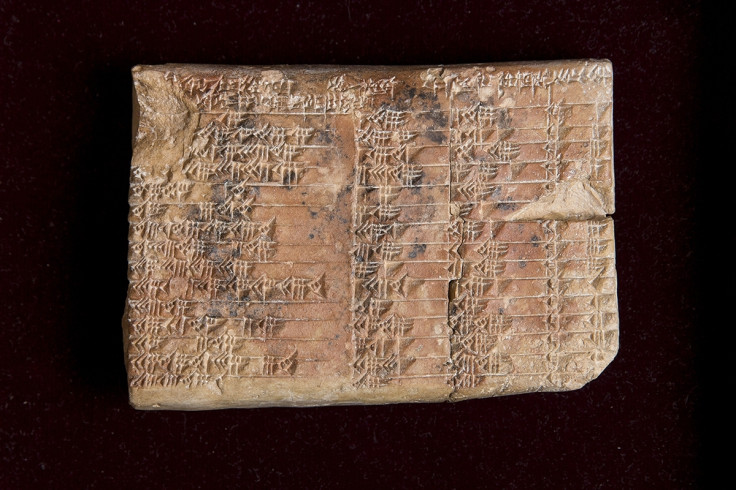3,700-year-old Babylonian stone tablet code finally cracked
Babylonians beat the Greeks to this form of advanced mathematics by 1,000 years.
The almost impenetrable mathematics of a Babylonian stone tablet has been solved, 3,700 years after it was written. Archaeologists have discovered that the tablet records the most accurate trigonometry table ever created.
The discovery, published in the journal Historia Mathematica, reveals that the Babylonians – not the Greeks – were the first to understand and use trigonometry. It puts the date at which the culture developed advanced mathematics a great deal earlier than historians had previously believed.
The tablet, made between 1822 and 1762 BCE and known as Plimpton 322, is thought to have been used by ancient scribes to build palaces, temples and canals. It has four columns and 15 rows of numbers written in the sexagesimal number system – otherwise known as base 60. For comparison, the way we normally count is in base 10.
Base 60 is more or less the format we use for telling the time – 60 seconds in a minute, 60 minutes in an hour. It's a lot easier to use for trigonometry than base 10 because there are many more whole fractions of 60 than there are of 10. This makes calculations in the sexagesimal system more accurate.
"The huge mystery, until now, was its purpose – why the ancient scribes carried out the complex task of generating and sorting the numbers on the tablet," reported study author Daniel Mansfield of the University of New South Wales in Australia.
"Our research reveals that Plimpton 322 describes the shapes of right-angle triangles using a novel kind of trigonometry based on ratios, not angles and circles.
"It is a fascinating mathematical work that demonstrates undoubted genius."
It was previously hypothesised that the table was a teaching aid, to help mathematics instructors check their students' work. But the discovery that the tablet instead relates to trigonometry suggests that it was more likely used by surveyors and architects to construct buildings and divide land.
The so-called 'father of trigonometry', the ancient Greek astronomer Hipparchus, will now have to be deposed from his title, if the researchers are correct. Hipparchus lived in the ancient city of Nicaea in north-west Anatolia around 120 BCE.

"Plimpton 322 predates Hipparchus by more than 1,000 years," said Norman Wildberger, also a study author at the University of New South Wales. "It opens up new possibilities not just for modern mathematics research, but also for mathematics education. With Plimpton 322 we see a simpler, more accurate trigonometry that has clear advantages over our own.
"A treasure trove of Babylonian tablets exists, but only a fraction of them have been studied yet. The mathematical world is only waking up to the fact that this ancient but very sophisticated mathematical culture has much to teach us."
Plimpton 322 was discovered in the early 20th century by an archaeologist called Edgar Banks, who was the real-life inspiration for the character Indiana Jones. It can now be found at the Rare Book and Manuscript Library at Colombia University in New York.
© Copyright IBTimes 2024. All rights reserved.





